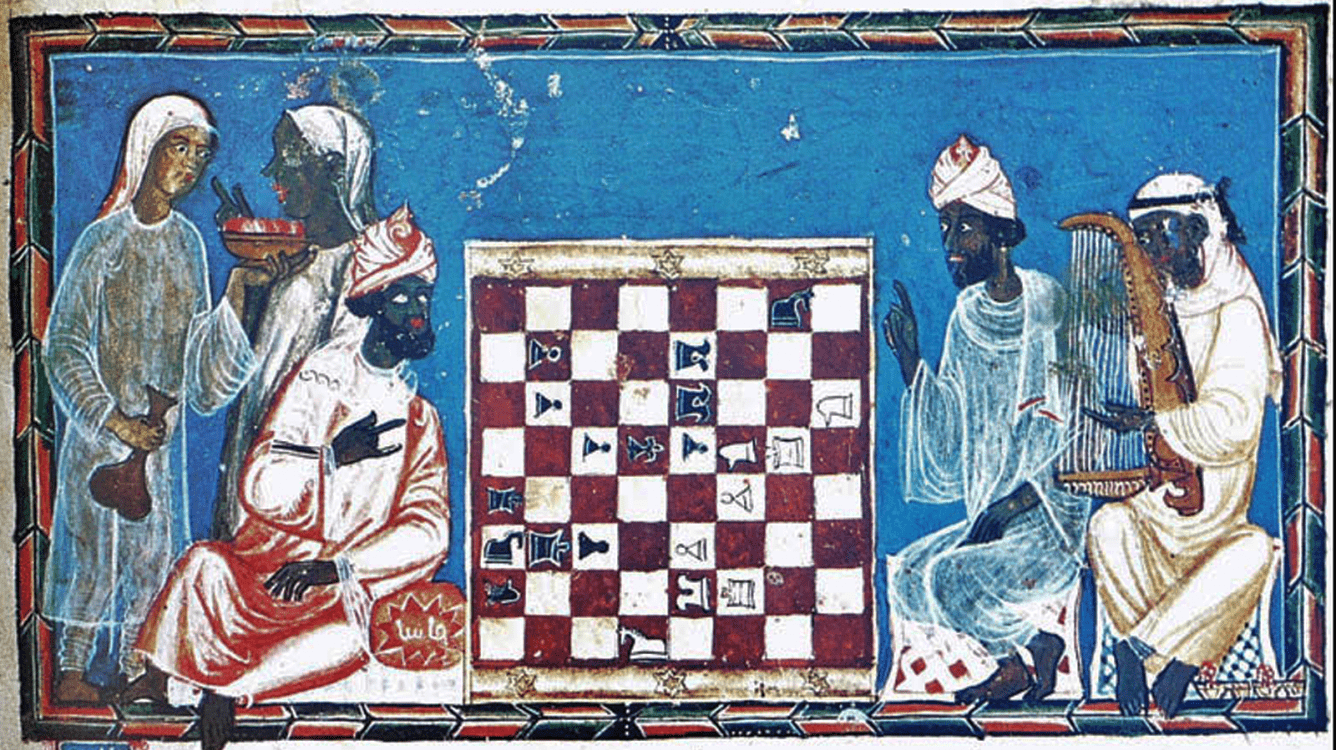
Chess Through An African Lens
Chess is a game of intrigue... a game of hopes and dreams. It is a marvel that allows us to externalize and analyze our inner thoughts. Its beauty shines brightly through its mystical persona.
The goddess of Caissa has charmed millions. Long-held as a game of gray-haired men with wizened faces, its enthusiasts stretch the entire globe. As a result, chess has become a popular activity of the youth. Given its evolution, we find the global appeal of chess to be far-reaching.
Yet, the game's universality can only shine through once it truly reaches all people—and not just a select few.

Historically, some groups have not had the chance to enjoy the beauty of chess, and such has been the case of the African Diaspora. In an effort to bridge the gap between our community and the game, I present to you a view of chess through an African lens.
After the expulsion of Moors from Spain, "shatranj" was remade into the game we know today. Thus, Spanish priest Ruy Lopez de Segura and traders from the Iberian Peninsula were the first ambassadors of the new variant.
During the Spanish explorations, signs that chess was spreading were observed by the increased number of players and chess sets collected and traded as artifacts. These sets essentially trace the history of chess and have touched all corners of the earth. After that, however, chess as a global pastime made inroads at a much slower pace. Nevertheless, chess traveled to the Western Hemisphere, ready for new adherents.
- The Legend Of James McCune Smith
- The Rise Of The African Diaspora
- Gens Una Sumus
- The African Miracles
- No One Is An Island
- Why Does This Matter?
The Legend Of James McCune Smith
James McCune Smith's role in the American abolitionist movement is well-documented. However, although noted as the nation's first Black practicing physician, he was less known as a pioneer in the chess community. Nevertheless, his eyewitness comments on Louis Paulsen and Paul Morphy at the first American Chess Congress in 1857 at the Descombes' Rooms on Broadway Avenue give us a peek into the world of chess leading into the 20th century.
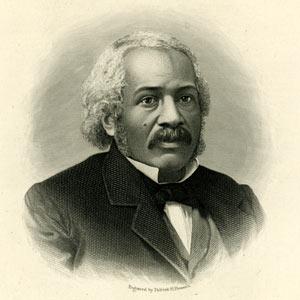
While Smith never made an impact as a player, his essay titled "Chess" was a masterful description of the world of chess in one of its most formative eras. In the troubled economic times of 1857, he recommended chess as a relief.
…and while the poor, frantic with an unknown dread, rushed to the savings banks, or gathered in bread mobs in distant parks in the midst of this social hurricane, there was one house in Broadway, in which men daily gathered, and matters went on "Calm as a summer's sea," the very centre of the vortex, yet calm as a moonlit pool, so deeply embayed in mountains, that no breath of air could reach it a land-locked haven, in which whoever entered, however storm riven or care-crushed, became calm and still, and hung up his votive offerings to the genius loci; which was neither music, nor dancing, nor dice, nor wine, nor opium, nor lotus, nor hasheesh, but simply Chess!
Smith not only helped to initiate the quest for equality, but he also became an ambassador for chess and extended its appeal beyond the cavernous halls of academia and the smoky rooms of posh chess clubs. His words would serve as a motivator for chess in the Black community decades later.
After the death of Smith in 1865, there was another player who made a significant impact on chess: Theophilus Thompson, a former servant who published a book of chess puzzles titled Chess Problems: Either to Play and Mate in 1873. He also played correspondence games, but he would make his mark as a composer. The city of Frederick, Maryland, has dedicated a sculpture to honor this hometown hero. Finally, here is a fun "rook romp" from Thompson where Black must mate with the rook in 10 moves:
The Rise Of The African Diaspora
After the two world wars, the world settled down once again, and some soldiers brought chess to their respective countries from overseas. However, chess remained on the fringes as a game of intellectuals. The 1950s and '60s represent a renaissance period where the game began to flourish in the U.S.
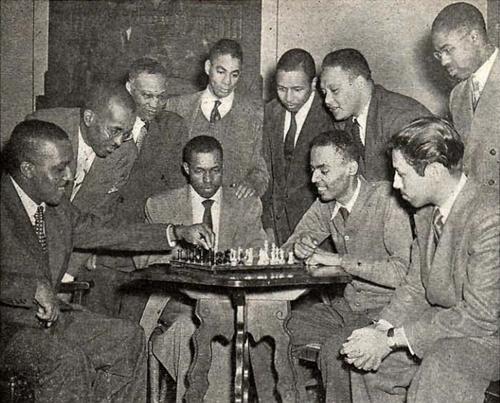
Walter Harris of Harlem, New York, became the first Black player in the U.S. to earn the title of national master in 1960. Archie Waters, a renowned Black journalist and mentor of GM Bobby Fischer, introduced Harris to the young prodigy, who was in his teens at the time. A tad bit older, Harris met the future legend at the Manhattan Chess Club and marveled that Fischer could spot him two minutes to his 30 seconds in blitz.
As it were, several Black players emerged in the 1960s, and the three would-be masters graced the cover of U.S. Chess Life magazine: Kenneth Clayton (June 1963), Harris (March 1964), and Frank Street (June 1965). Incidentally, the '60s were socially turbulent times in the United States. Nevertheless, many Black chess masters in America seemed to use chess to further their career ambitions since being a chess professional was not economically practical.

While this could be considered a social breakthrough in a racially-divided country, there were other pioneers in countries where chess was a national obsession. In 1966, Cuban champion Rogelio Ortega made his mark and would precede a long line of Cuban masters of African ancestry, or "Afro-Cuban." Ortega represented Cuba against some of the world's elite, including GMs Mikhail Tal, Boris Spassky, Vasily Smyslov, Efim Geller, Lajos Portisch, Samuel Reshevsky, Miguel Najdorf, David Bronstein, Nicolas Rossolimo, and Israel Horowitz. He played in the 1959 U.S. Open and helped to host the 1966 Chess Olympiad in Havana as Cuba's national champion.
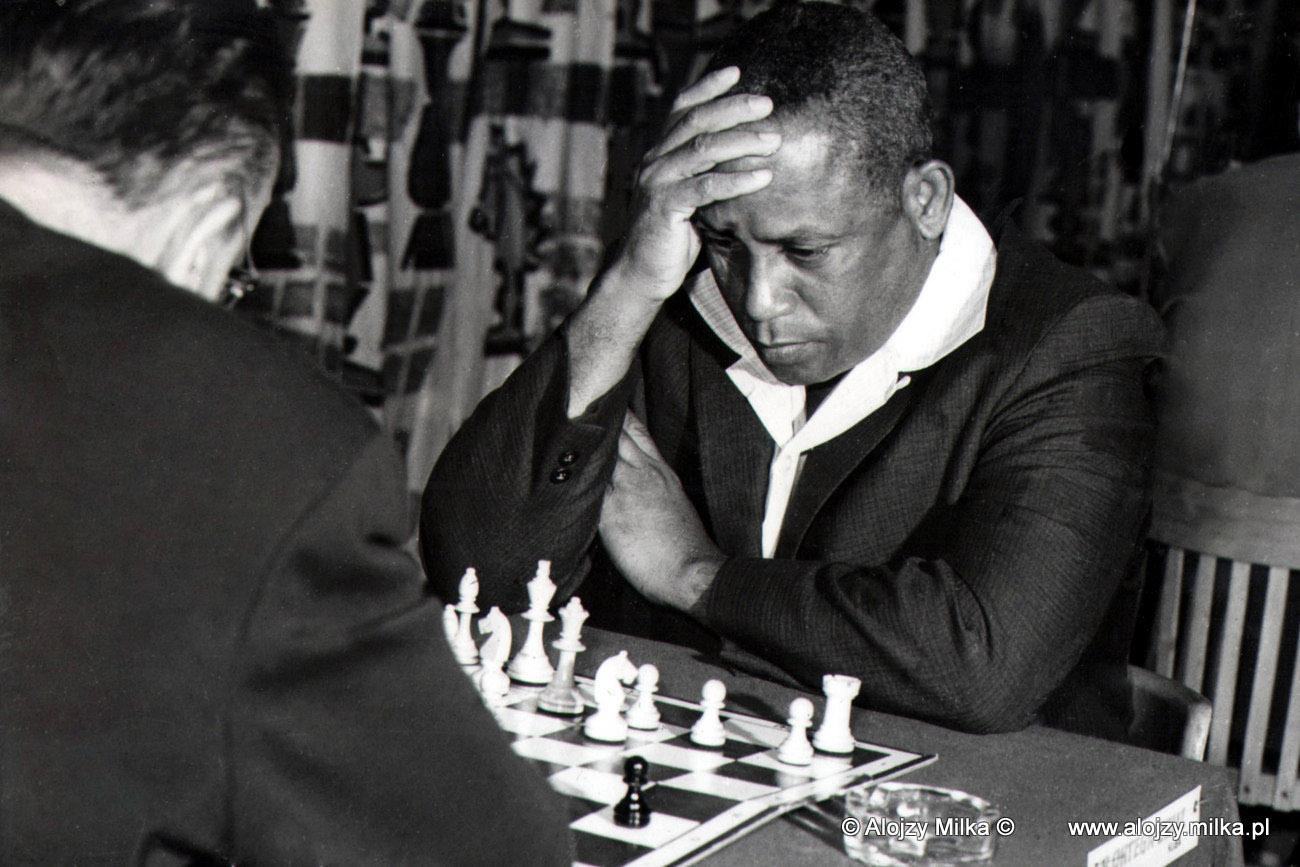
With the "Fischer Boom," the 1970s and '80s saw a rapid increase in the popularity of chess in the African Diaspora. Several Caribbean nations became members of FIDE in the '70s to coincide with the momentum created by the rise in interest in chess. Cuba's Roman Hernandez became the first player of African ancestry to earn the GM title in 1978. Dozens of Black masters emerged in the Western Hemisphere, and interest within the newly formed African and Caribbean federations began to bubble.
The scene in the U.S. was such that chess had a glimmer of greatness with Morphy, Reshevsky, and Fischer, but there had always been an issue with mainstream acceptance. Among the Black players in the U.S., many aspired to earn FIDE titles, but there were a couple of issues: lack of norm tournaments in the U.S. and lack of sponsorship to travel to Europe to play for norms.
Two showed the most promise and were resourceful enough to travel: Emory Tate and Maurice Ashley, both FIDE masters at the time. Interestingly enough, both offered friendly competition and, in 1993, played this thrilling game. After the last move, both looked at each other and started laughing, amazed at the match that would symbolize fighting chess.
There was always a question of which of these gladiators would earn the GM title first. After a tortuous journey, Ashley would earn the honor in 1999. He was later inducted into the U.S. Chess Hall of Fame and is a popular commentator on the professional circuit. Tate had a fine collection of spectacular wins against grandmasters but would not achieve the title himself. He died tragically in 2015 while playing in the Sam Shankland Open in Milipitas, California.
Gens Una Sumus
It appears that the 1990s were a decade of tremendous growth of chess worldwide. FIDE President Florencio Campomanes wanted to globalize chess and create conditions in which developing nations could engage more directly. Nevertheless, new federations sought to gain footing, particularly in Africa and the Caribbean. Angola was one of the pioneering federations, boasting several international masters when many African federations did not have a single rated player.
South Africa's IM Watu Kobese was getting some attention after 3½ years of study with GMs Ludek Pachman, Miroslav Filip, and Lothar Vogt. Kobese played in Bad Woerishofen, Badenweiler, Krumbach in Germany and the prestigious Capelle La Grande in France.
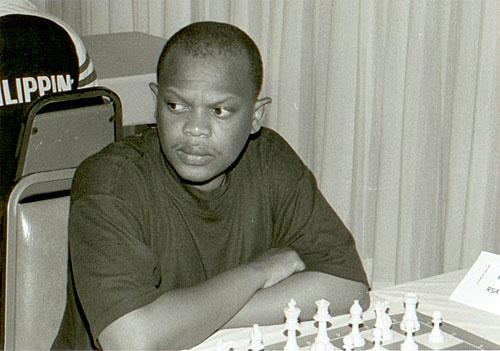
Although he played well and picked up two GM norms, he returned to South Africa, a nation rebuilding after being under sanctions for apartheid. There were few opportunities, but he did notch a couple of high-profile victories, one over GM Judit Polgar and another over her compatriot, GM Peter Leko.
Kobese is like many African players whose grandmaster potential goes unfulfilled. The irony is that several countries in Africa brim with chess potential, but there are not adequate resources available to cultivate the players. A second problem is more complicated: the ability to travel.
Visa challenges combined with the high travel expenses make it difficult to compete abroad for norm opportunities. This is why there is such excitement when African and Caribbean players compete at the Olympiad and look to collect the scalp of an unsuspecting grandmaster.
This year, IM Robert Gwaze published his autobiography, Life and Games of Robert Gwaze. In this book, he details his career including his 9/9 gold medal performance at the 2002 Chess Olympiad in Bled, Slovenia. He had the tournament buzzing as he toppled one opponent after another for a 2690 performance rating.
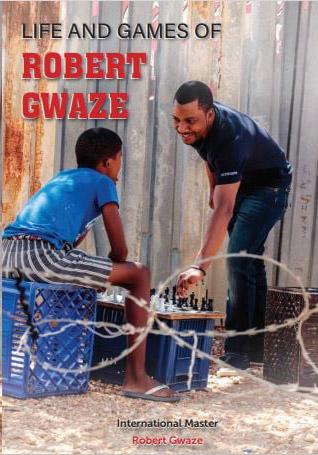
Book cover.
After that performance, he searched for opportunities and spent stints in England and Malaysia. He then returned to Zimbabwe to be near the family and compete once again. Later he headed to the 2007 African Individual Championships in Windhoek, Namibia, where he describes what it is like to travel in Africa in the back of a delivery truck.
It was a rough journey, one which forged a bond between all the passengers, as we all silently reflected on our pitiable backgrounds which had necessitated us to travel to Windhoek in such a demeaning manner. I remember at one time during the trip, when the truck drove along rough terrain, how it violently bumped and we were tossed about to and fro like ragged dolls and a person would accidentally end up in someone else's lap. That's how demeaning it was. As a result, I chose to sleep the entire trip, only to awake at the border for inspection. A few hours later, we reached our destination, as soon as I got out of the container which served as our carriage, I smiled as I inhaled fresh air. It was a sweet moment but short short-lived as I now had to figure out how to partake in the games.
Gwaze would win the tournament ahead of three grandmasters and collect his second GM norm. In the book, he talks about his path but also mentions the struggles. It is a notion echoed by many on the continent. The harsh reality of chess is the amount of time required for success and diminishing returns to reap the benefit. Gwaze explains it this way: "Given that chess is a game that needs time and patience before you reap the rewards, many could not afford to wait for that glory. It was always heart-wrenching to see a player walk away because of this."
The African Miracles
Fortunately, things are a lot different today, with over 190 members of FIDE. Of the 54 countries in Africa, 50 have active federations. Egypt remains the strongest federation with the dynamic duo of GMs Bassem Amin and Ahmed Adly.
In sub-Saharan Africa, Amon Simutowe of Zambia earned his GM title in 2009. His undeniable talent drew praise after his strong performance at the 2000 World Junior, where he came in joint second with 8½ out of 13. Kenny Solomon of South Africa earned his title in 2015. There are some 15 grandmasters in Africa, with Slim Bouaziz of Tunisia the first in 1993 and his compatriot Amir Zaibi being the latest as of this writing.
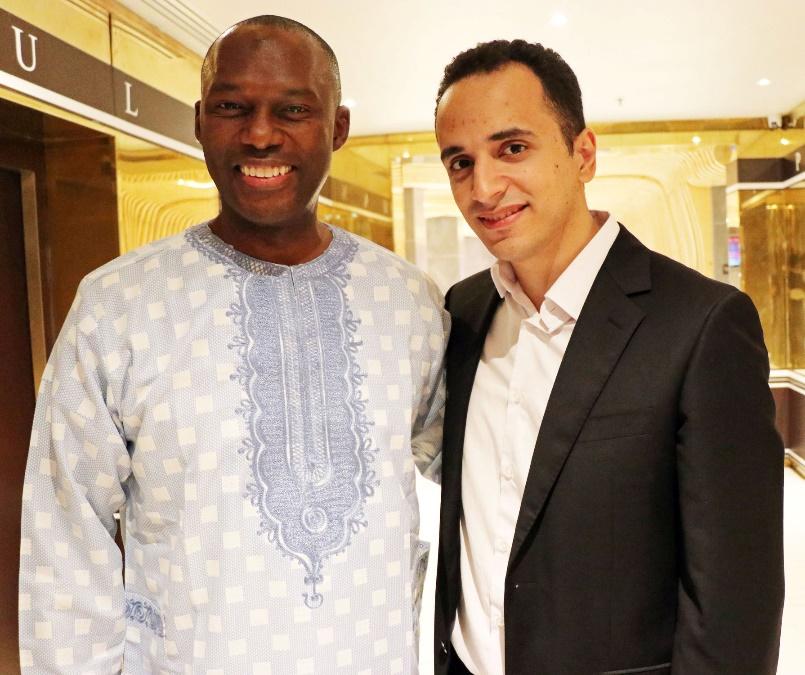
Africa has a very active social media presence and appears to be fully engaged. The problem with social media is that it may lack permanency, and the conversations are very fleeting. A few websites and blogs such as The Chess Drum cover Pan-African content, and others cover Africa such exclusively as Africa Chess Media, Kenya Chess Masala, and Bruvschess. However, many beautiful stories go untold. Fortunately, some are told.
The Queen of Katwe was a 2016 movie adapted from a book by Tim Crothers telling the story of WCM Phiona Mutesi, who used chess as a vehicle to escape the horrible slums of Uganda. Katwe, Uganda, is yet another success story for chess, but the lesson has been missed by many. There have been those in the chess community who focus on her modest Elo rating as if that somehow makes her life story less impactful.
Nevertheless, Mutesi earned her bachelor of arts degree in May 2021 from Northwest University in Seattle. She is now working for Microsoft as a business analyst. This is another chapter to be added: To come out of Katwe and to graduate from college! She will inspire thousands for generations to come. We can thank chess for this miracle, and the world is a better place.

No One Is An Island
In February, The Chess Drum ran a Black history segment honoring many players, including the Afro-Latinos, who may not get attention in English-language media. In fact, GM Pontus Carlsson (born in Colombia and raised in Sweden) once asked me why I had not paid tribute to certain Afro-Latino players. Much has to do with not following Spanish-language chess content. Unfortunately, that is the reality in a world dominated by English-language media. Of course, Cuba's WGM Oleiny Linares' silver medal at the 2008 Chess Olympiad received special mention, and her compatriot WIM Yaniela Forgas' 2022 title was praised.

As far as other countries in the Caribbean, some have small but robust communities. Others have just joined FIDE. Interestingly, with small federations, they tend to have one dominant player and local legend until the next wave of talent comes. Many national players in the Caribbean are multiple-time national champions. GM Ramon Mateo has the distinction of winning national championships seven times, including titles 31 years apart (1979 and 2010).
IM Shane Matthews of Jamaica is a seven-time champion, and FM Warren Elliott, also of Jamaica, is an eight-time champion. FM Ryan Harper of Trinidad is a nine-time champion and before him, FM Christo Cave was a 13-time champion. This dominance by a single player means more is needed to develop young talent. FM Joshua Christie (Jamaica), FM Joshua Johnson (Trinidad), and IM Orlando Husbands (Barbados) are a few showing promise.
Why Does This Matter?
In the first couple of years of starting The Chess Drum, a few critics disliked that a website gave primary coverage to players of African ancestry. Some rationalize their condemnation by painting a harmonious world spouting "Gens Una Sumus" and speaking of a color-blind chess world. That may be what we want to see, but in practice, there is still a need to provide a platform for players who would not otherwise be known.
As a junior player, I read chess material voraciously and rarely saw any players of African descent. This led me to start researching, and I wrote a marketing plan to create a Pan-African chess magazine. Instead of a magazine, the plan led to the launching of The Chess Drum in 2001. After 21 years of operation, I have confirmed a great demand to fill the gap in chess literature.
It appears that many are supportive of initiatives to highlight women, seniors, juniors, disabled, and imprisoned, but there have been awkward moments for The Chess Drum. Bear in mind, the site has covered top-level events, including Olympiads, Grand Chess Tour events, and world championships. The mission has been to expose the chess world to this overlooked segment, and, at the same time, to provide the African Diaspora with an accessible bridge to the chess world.

A few critics have said that emphasizing ethnicity is unnecessary and divides people. This notion could not be more wrong and is the opposite of what it does. It is hypocritical to tout a harmonious chess community yet discourage the inclusion of unique history and information that add to the body of chess literature. There are countless books written on every demographic, and they only enrich our knowledge of chess.
The importance of recognizing players of African ancestry is one of inclusion and not exclusion. These initiatives are needed just as there is a need to increase the participation of other demographic groups. If chess is to be successful, we have to show that chess has touched the entire globe. If the public believes that chess is only attractive to specific people, we will not have demonstrated its true universality. Chess deserves better, and we must tell the stories that may otherwise pass into the dustbin of history.




